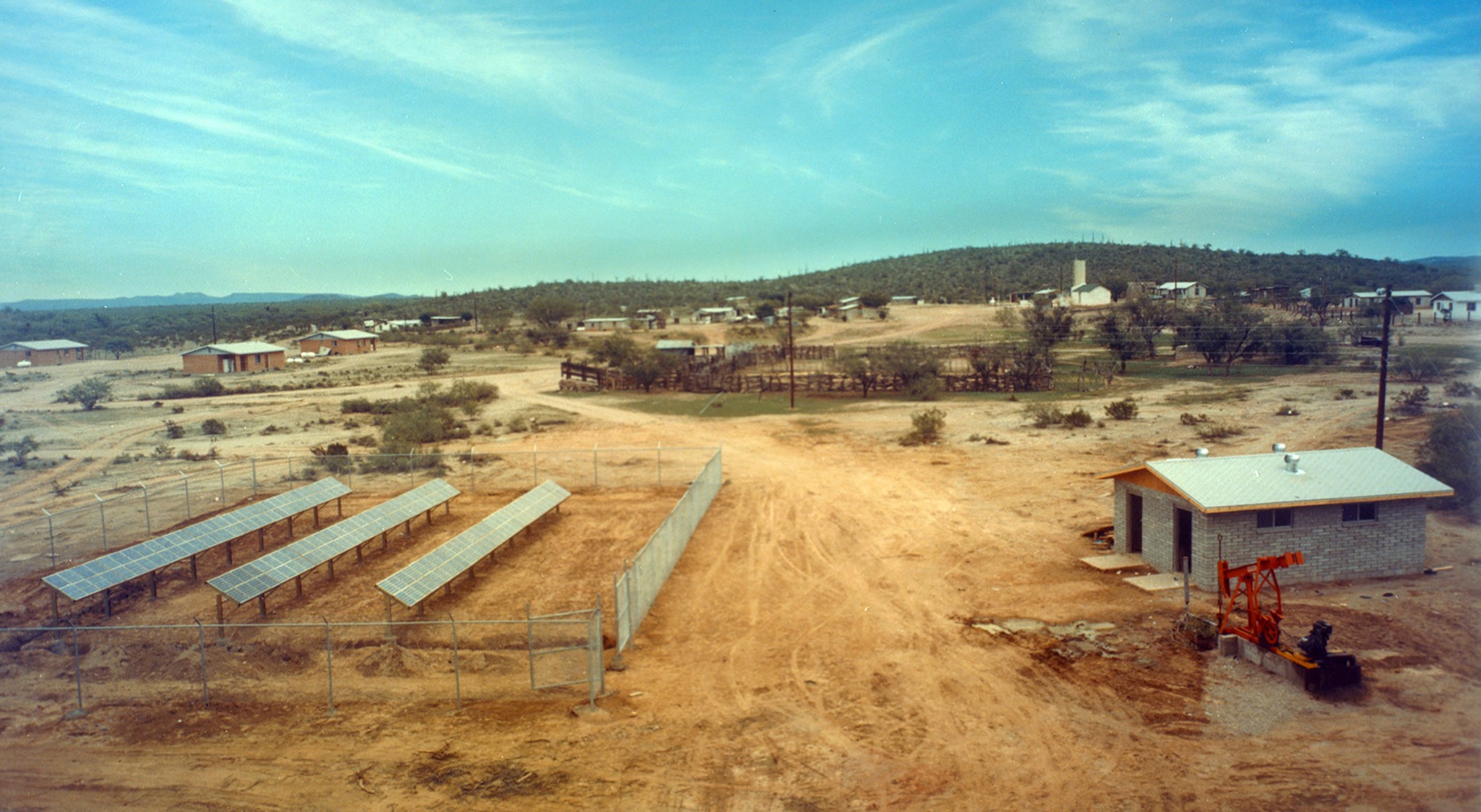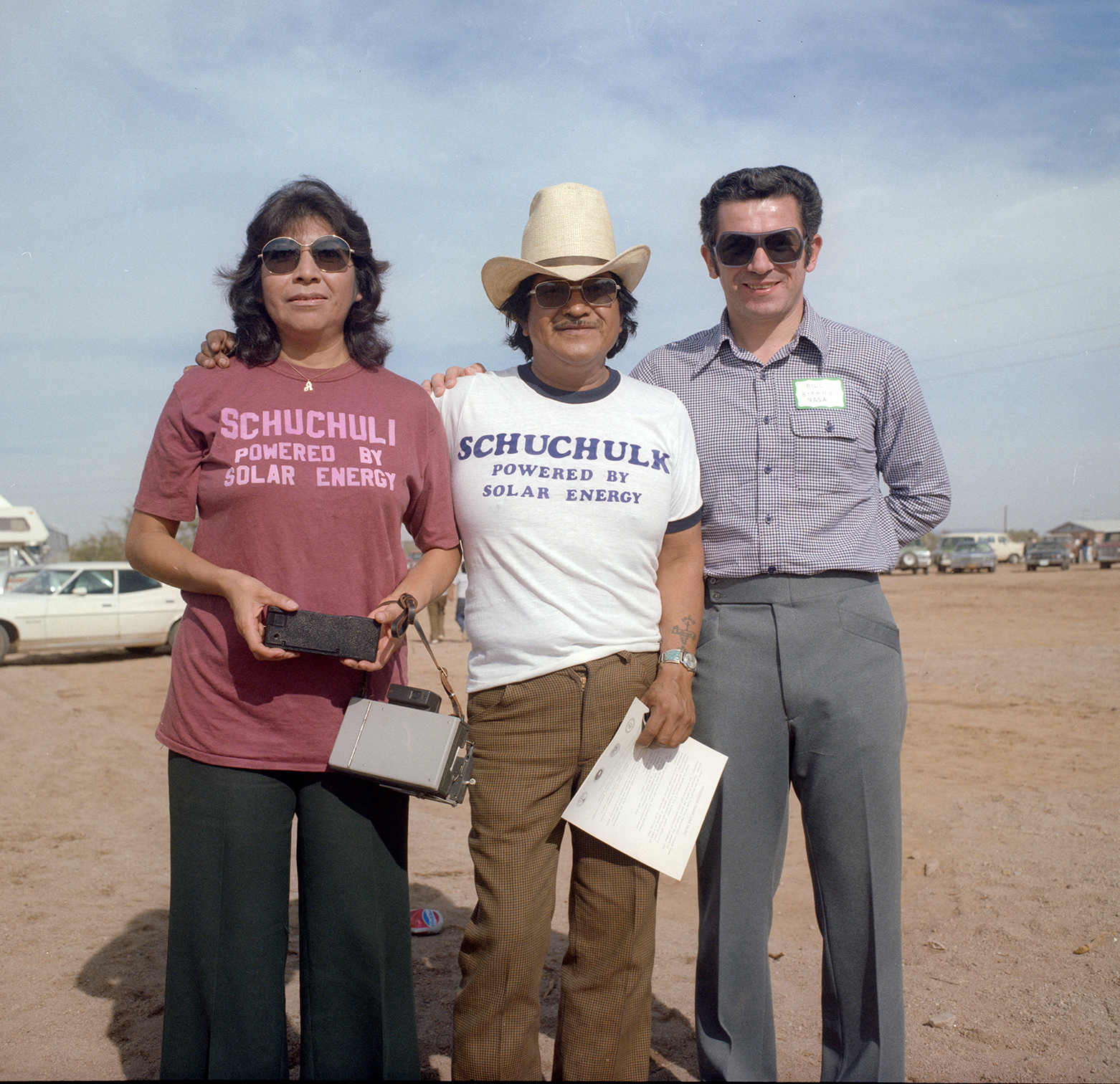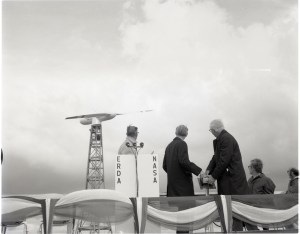On December 16, 1978 engineers from NASA’s Lewis Research Center activated a new photovoltaic system that provided reliable electricity to Schuchuli, Arizona on the lands of the remote Papago Indian Reservation.
This first “solar electric village,” which was 17 miles from the nearest power lines, had previously relied on kerosene lamps, a diesel-powered well, and hand-washed laundry. Over the next year, hundreds of domestic and foreign officials as well as media members trekked to the site to view the groundbreaking power system.
In 1970, the Department of Energy (DOE) assigned NASA Lewis responsibility for testing and demonstrating a variety of near-term, Earth-based solar power applications, including stand-alone power systems. Lewis conducted a number of photovoltaic tests at the center and created 16 working systems in the field to demonstrate solar applications such as solar-powered road signs, weather stations, and fire lookouts. The 3.5-kilowatt system at Schuchuli, however, was the largest and most ambitious effort.
Schuchuli, which was just north of the Mexican border and 120 miles west of Tucson, was selected jointly by Lewis and the U.S. Public Health Service for a solar-powered water pump demonstration. The DOE funded the project, Lewis designed the power system and provided the equipment, and members of the local Papago Tribe performed the basic construction.
The system consisted of 24 4-by 8-foot solar panels arranged in three rows within a large fenced in area. A new Electrical Equipment Building housed a 53-cell lead-acid battery to store the energy and a 12-volt distribution network. The 3.5-kilowatt system produced enough energy to not only power the water pump, but also to light each of the 16 homes and operate 15 refrigerators, a freezer, and washing machine.
During the system’s three-year experimental phase, Lewis personnel reviewed weekly operational data and made semi-annual site visits, and two Arizona State University researchers studied the impact of the new system on the village. Despite minor initial operational issues, the power system remained online 89% of the time during the first 2.5 years and produced an 8% cost savings compared to diesel-powered electricity.
When Schuchuli finally connected to the grid in the 1980s, the solar panels were repurposed to power a new water system. The photovoltaic system was eventually retired in the 1990s as the technology became outdated. The demonstration was successful.
The project clearly demonstrated the feasibility of large stand-alone solar-powered systems. Lewis teamed with other agencies in the ensuing years to use the technology at 58 other sites in developing countries.
Robert S. Arrighi
NASA Glenn Research Center
































